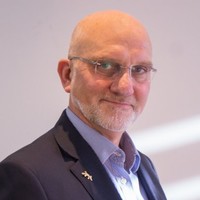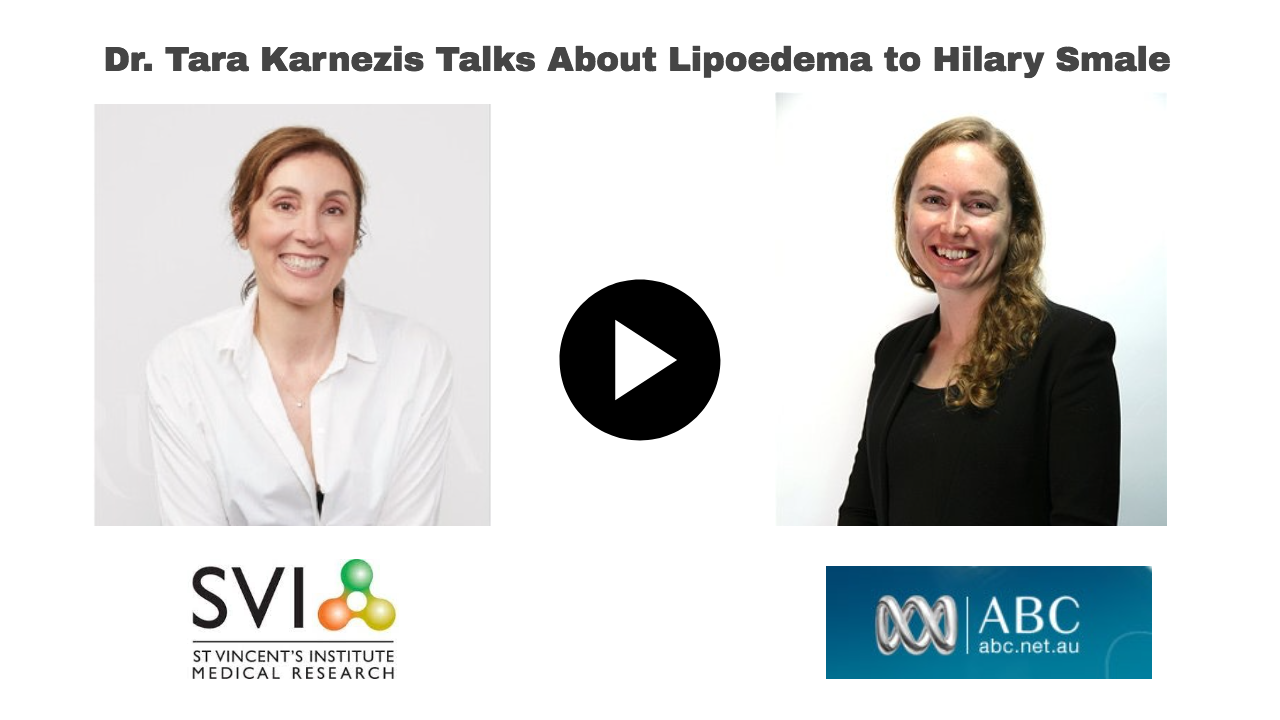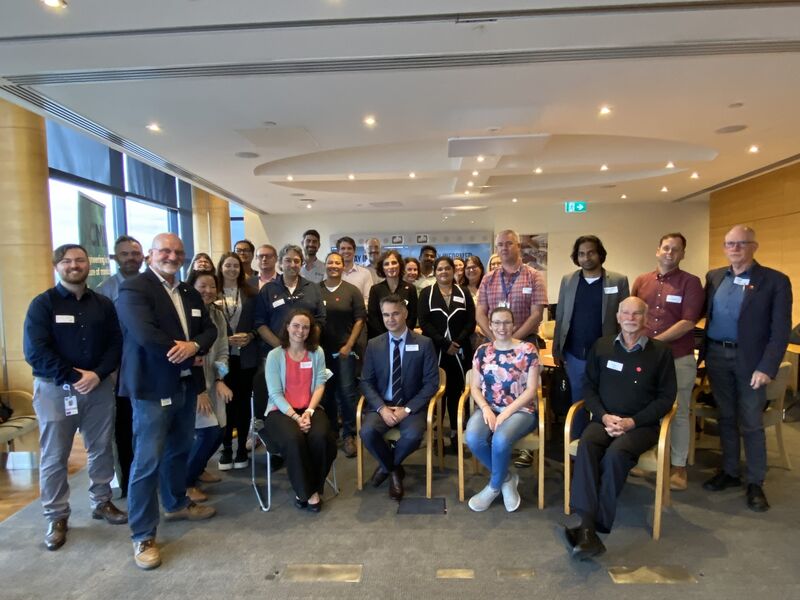Lymphoedema and Lipoedema News From Down Under - PhysioPod Talk To Associate Professor Ramin Shayan

PHYSIOPOD FORWARD
In 2022, PhysioPod shared the important new study “New discoveries make steps toward lipoedema diagnosis and treatment,” published in the International Journal of Obesity, which Dr. Tara Karnezis and Associate Professor Ramin Shayan led. The study identified a stem cell in lipoedema and a gene that drives excess fat growth – elements key to diagnosing and treating the condition. Dr. Karnezis said of the study, “Our findings confirm, consistent with the lived experience of families, that lipoedema is a legitimate medical condition, and that it is not the same as obesity – our team has identified a key stem cell and some of the genetic and molecular mechanisms that underpin it.” Since this time, PhysioPod and Ramin Shayin have kept in contact to discuss activities Down Under regarding their activities.
Yes thanks so much Ramin, in Lipoedema surgical treatment what do you do differently to other plastic surgeons?
Below is the ABC radio interview
Radio Interview Transcript
Can you tell us firstly what this condition is? What is Lipoedema?

Lipoedema is a disease where fat or adipose tissue is disproportionately accumulated in the limbs, generally in the lower limbs, to the legs.
So what happens is in these women onset usually occurs around puberty, so then they'll notice their legs are starting to become, you know, a little bit more swollen, a little bit bigger in proportion to the rest of their body and over time, that just gets worse and worse. Sometimes it's subsides and other times, where there is a change in hormonal status like pregnancy or menopause, the disease is reignited if you will, and you get more accumulation of fat and in their legs generally.
You mentioned women - does it only occur in women?
Wow! And do you know how common it is in Australia?
Again, very little information out there because the disease isn't/wasn't really formally recognised or even talked about up until recently. I've read a literature where it sort of goes from 1 to 10% of the population and a lot of the studies were done in the US. It could be higher than that. We don't know. I think that would be a very important piece of information to try and get is a really good handle of just how widespread the disease is in the general population.
How can you identify yourself, you know, if you might have the condition, what can you look out for?
Yeah, I think women, females that have it will always tell their GP's 'look, you know, doctor, I have been sort of having this very heavy feeling in my bottom legs. They look really big compared to the rest of my body. I've tried, you know, every diet under the sun and it can't seem/it doesn't seem to be shifted.'
It's a very painful condition and they'll notice lots of bruising. They get bruising that occurs very easily and readily.
So that's the kind of symptoms that they observe in themselves that may prompt them to go and see a general practitioner to get an official diagnosis.
Have you had conversations with people with this condition who maybe have been misdiagnosed or not?
Yeah. not listened to I suppose and legitimised. Look, the confounding factor in this disease is the fact it has often been labelled as obesity. So while there could be a contribution to, you know, women with Lipoedema can't walk around as easily as their normal counterparts and as a result, you can, you know, obesity can contribute to it down the track. But in general, it has been misdiagnosed, if you will, with obesity. So therefore, it got people diagnosed as that and its more a question of changing your lifestyle, as opposed to addressing the issue, which is the disease itself.
I'd be interested to know, I guess, why it's taken so long to confirm it as a diagnosable condition. Do you know why that might be?
Well, I think the fact that for a long time people thought it was just obesity. So women with this condition used to go and go to their GPS and say, can't really do anything about this weight. What should I do? And the sort of remedy was, well, you just need to go and try, you know, diet and exercise. And then they would come back and forth and eventually they would give up.
So for a long time, I don't think it was accepted as a legitimate condition in the medical community. Unfortunately, it took a lot of very brave women to kind of stand up to that and say, well, hang on a minute we don't think you're right here and which has really forced clinicians and practitioners to kind of look a little bit more deeply into that. And then, you know, you've got the scientific community around the table as well.
So between the clinicians and the scientists, I think it's pretty clear, to me at least, and certainly within the scientific community, it is a separate condition to obesity. Obesity you can control to some extent, mostly by diet, so it's responsive.
Lipoedema is something you develop as you progress into puberty and adulthood, and it's something that you can't actually change without some managing of the condition. So it's not amenable to the type of diet and exercise you would normally do if you were labelled, if you were diagnosed with obesity.
So what kind of treatment options are there? If it's not a sort of a lifestyle change, then what can you turn to?
Yes. So, look, there are some reports, again, very conflicting evidence. For the most part, there's managing the condition. So you would try to be as active as you could. Again, don't try and confound the disease by obesity. You would look after yourself like we all have to, good diet and exercise regime, just to keep you healthy for the long term.
Massage therapy is something people manage the condition with.
Because just to throw more fire into the woodwork, you get swelling, so that's part of the symptoms you develop is swelling. So massaging helps with that swelling of the swollen legs. It helps remove the lymph fluid. The other thing and this is, again, available to some patients, it's a rather expensive treatment option, but some of the patients that have really accumulated a lot of fat to the point where in their legs where they can't, debilitated, they have to be in wheelchairs. They opt for surgical like de-bulking surgery (liposuction with tissue excision)
So you're removing essentially a whole, you know, a lot of the adipose tissue from the legs. And what that does is enables them to become mobile again.
And therefore, you know, they're able to take a little bit more control of their lives in that regard rather than being, you know, living their life in the wheelchair, they're able to get up and become more mobile again. But that's not for everyone. It's extremely expensive and it is time consuming because it's one leg treated at a time.
Just finally, for people who are listening and, you know, think maybe they themselves or family member or friend might have this condition, where would you suggest they turn to for more information or to even seek out a diagnosis
I think going to your GP for the most part and talking to your GP about it and they will usually refer you to either a specialist, a physiotherapist or a plastic surgeon. There are several plastic surgeons who treat the condition by de-bulking surgery, so they are very aware of what it is and there's a criteria of what they look for in these patients, hip to waist ratio, pitting oedema, a whole bunch of them that they kind of run through before they make a diagnosis but that's what I would recommend to people who think they may have or suspect, is go and see their GP.
Well great advice and thanks so much for shedding more light on something that I had no idea about. Great to have your time this afternoon.
PDF DOWNLOAD OF RADIO INTERVIEW
LYMPHOEDEMA DOWN UNDER!


Thank you so much Ramin.
Mary, you know, both Tara and I welcome feedback from your readers on any of the content in this article. My email is ramin.shayan@icloud.com and Tara's is tarakarnezis@hotmail.com



